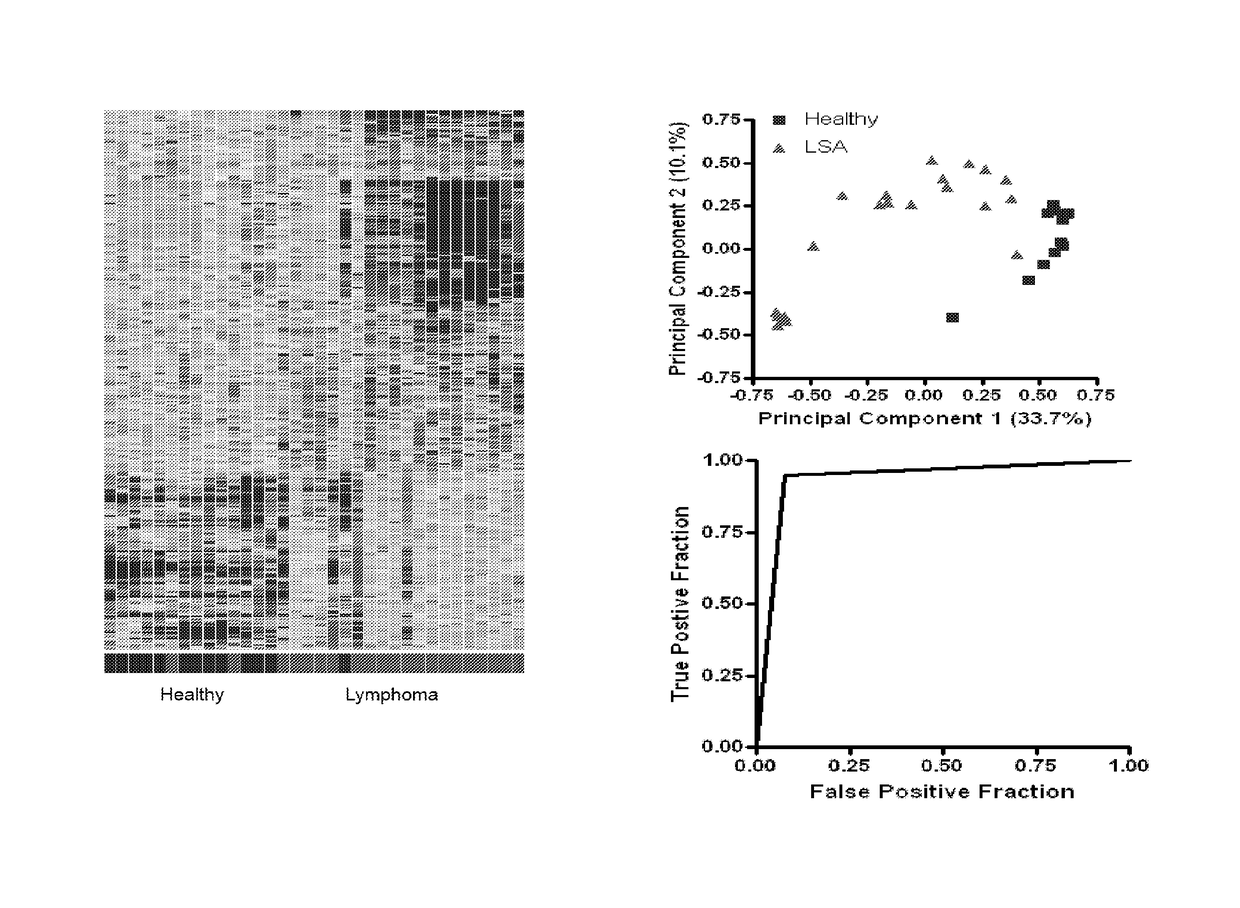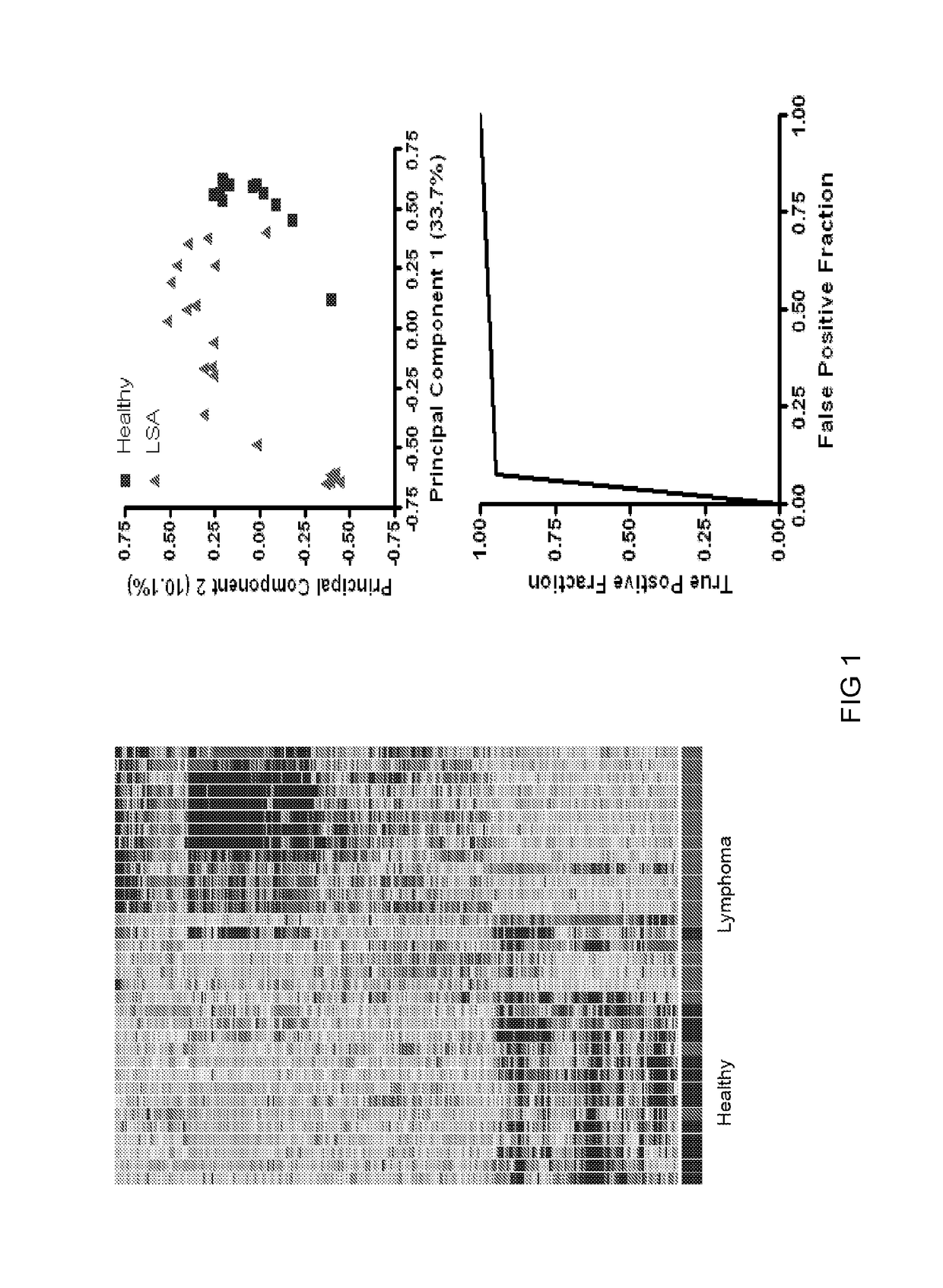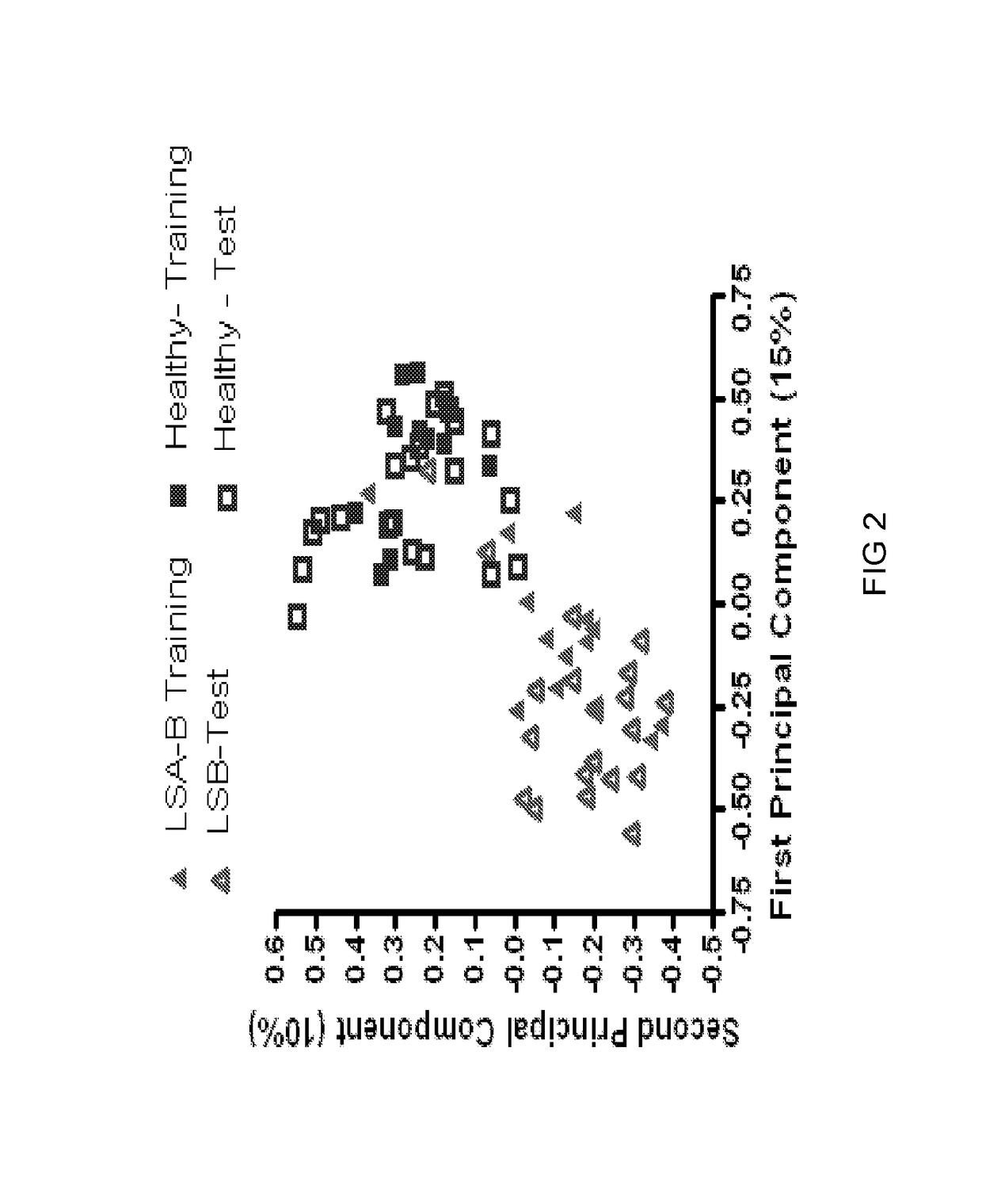Immunosignature based diagnosis and characterization of canine lymphoma
a lymphoma and immunosignature technology, applied in the field of veterinary medicine, can solve the problems of lack of non-invasive tests, complicated diagnosis, limited use as primary screening tools, etc., and achieve the effect of enhancing patient care and high sensitivity
- Summary
- Abstract
- Description
- Claims
- Application Information
AI Technical Summary
Benefits of technology
Problems solved by technology
Method used
Image
Examples
Embodiment Construction
[0020]The following abbreviations are used throughout this disclosure:[0021]LSA B or T cell Lymphoma[0022]LSA-B B cell Lymphoma[0023]LSA-T T cell Lymphoma[0024]DFI Disease Free Interval[0025]SVM Support Vector Machine[0026]LOOCV Leave One Out Cross Validation[0027]FDR The Benjamani and Hochberg False Discovery Rate Correction
[0028]To evaluate the immunosignature as a diagnostic for spontaneous canine lymphoma at both initial diagnosis and evaluating the disease-free interval following treatment, the following experiments were performed. However, these experiments are merely examples and not meant to limit the claims in any way.
[0029]Experimental Design, Results, and Conclusions in Outline: Serum from dogs with confirmed lymphoma (B cell n=38, T cell n=11) and clinically normal dogs (n=39) were analyzed. Serum antibody responses were characterized by analyzing the binding pattern, or immunosignature, of serum antibodies on a non-natural sequence peptide microarray.
[0030]Peptides were...
PUM
| Property | Measurement | Unit |
|---|---|---|
| imaging tests | aaaaa | aaaaa |
| physical examination | aaaaa | aaaaa |
| CT | aaaaa | aaaaa |
Abstract
Description
Claims
Application Information
 Login to View More
Login to View More - R&D
- Intellectual Property
- Life Sciences
- Materials
- Tech Scout
- Unparalleled Data Quality
- Higher Quality Content
- 60% Fewer Hallucinations
Browse by: Latest US Patents, China's latest patents, Technical Efficacy Thesaurus, Application Domain, Technology Topic, Popular Technical Reports.
© 2025 PatSnap. All rights reserved.Legal|Privacy policy|Modern Slavery Act Transparency Statement|Sitemap|About US| Contact US: help@patsnap.com



